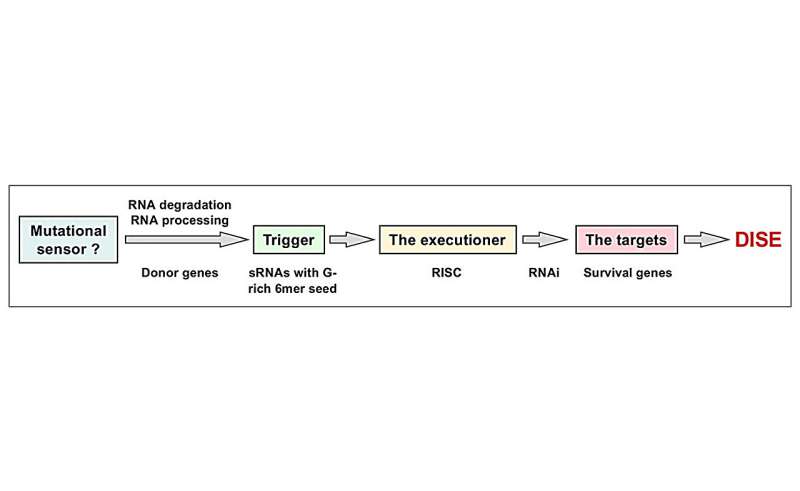This article has been reviewed according to Science X's editorial process and policies. Editors have highlighted the following attributes while ensuring the content's credibility:
fact-checked
peer-reviewed publication
proofread
An ancient anti-cancer mechanism: DISE

A new editorial paper titled "DISE, an ancient anti-cancer mechanism that senses mutational load in cancerous cells?" has been published in Oncotarget.
In their new editorial, researchers Monal Patel and Marcus E. Peter from Northwestern University discuss a recent breakthrough in cancer therapy. Despite the multiple advances in therapy, cancer remains one of the most common causes of death globally. It is a systemic disease affecting people of all ages and originates at the level of single cells, which upon acquisition of mutations, become neo-plastically transformed.
Cell division is the biggest risk factor for the accumulation of mutations, explaining why all multicellular organisms, which evolved about 2 billion years ago, are prone to cancer. Given the recent achievements in cancer treatment with immune checkpoint blockade therapies, multicellular organisms may have developed the immune system as a mechanism to eradicate cancerous cells: "However, the immune system arose relatively recent[ly], ~500 million years ago," the study authors note.
Moreover, studies have shown that cancer cells can become resistant to the anticancer activity of both the innate and the adaptive immune system. Therefore, while the immune system is important, it is likely not the most vital machinery that emerged in multicellular organisms to prevent cancer formation. The researchers believe that there are other more effective and archaic anti-cancer mechanisms that are conserved during evolution.
Of note, RNA interference (RNAi) is a highly conserved biological mechanism for silencing gene expression. While RNAi likely emerged as a defense tool against viruses and other foreign nucleic acids, it has also evolved to have other activities in the cells. The team's research has identified a new evolutionarily conserved RNAi-based form of cell death that targets essential survival genes: "Death Induced by Survival gene Elimination (DISE)".
"DISE was discovered through our work on CD95 and its ligand, CD95L, where we found that more than 80% of 26 different short interfering RNAs (siRNAs) and short hairpin RNAs (shRNAs) derived from the two genes killed multiple cancer cell lines via simultaneous activation of multiple cell death pathways; and we were unable to find a way to inhibit this form of cell death," the authors note.
More information: Monal Patel et al, DISE, an ancient anti-cancer mechanism that senses mutational load in cancerous cells?, Oncotarget (2023). DOI: 10.18632/oncotarget.28466



















